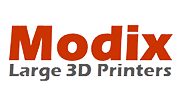The Future of 3D Printing in the Philippines: Opportunities and Challenges

3D printing is no longer just a buzzword—it’s becoming one of the most promising technologies shaping industries worldwide. From healthcare and construction to manufacturing and education, this innovation is opening doors to new possibilities. In the Philippines, the future of 3D printing looks bright, but of course, it’s not without a fair share of hurdles.
Let’s dive into the opportunities and challenges of 3D printing in the country and see how this technology could transform the way Filipinos work, create, and build.
On This Page
- Why 3D Printing Matters to the Philippines
- Opportunities in 3D Printing for the Philippines
- Challenges of 3D Printing Adoption in the Philippines
- How 3D Printing Is Changing Industries in the Philippines
- 3D Printing in the Philippines: Key Trends to Watch
- The Future of 3D Printing in the Philippines: Final Thoughts
Why 3D Printing Matters to the Philippines
Additive manufacturing—commonly known as 3D printing—allows users to build objects layer by layer using materials like plastic, resin, or even metal. Unlike traditional manufacturing, which often involves cutting or molding materials, this process reduces waste and offers greater customization.
In the Philippines, where industries like manufacturing, healthcare, and design are steadily growing, the benefits of digital fabrication are becoming more apparent. Small businesses and startups, in particular, can use it for cost-effective prototyping and production without needing massive factories.
Opportunities in 3D Printing for the Philippines

1. Boosting Local Manufacturing
One of the biggest opportunities for 3D printing in Philippine manufacturing is reducing reliance on imported parts. Instead of waiting weeks for components to arrive, businesses can produce prototypes or custom parts locally. This doesn’t just save money—it also helps industries stay agile. Imagine automotive shops producing replacement parts on demand or furniture makers customizing pieces faster than ever.
2. Empowering Healthcare and Education
The healthcare sector is another space where 3D printing can shine in the country. Customized prosthetics, dental implants, and even surgical models can be created at lower costs compared to imported solutions. This could make advanced healthcare more accessible to Filipinos who need it most.
In education, schools and universities with access to 3D printers can help students learn design, engineering, and problem-solving skills in a hands-on way. The future trends in 3D printing Philippines are pointing toward more learning institutions adopting this technology.
Related: 3D Printing in Education: The 6 Essential Benefits
3. Fueling Innovation for Startups and SMEs
For entrepreneurs, the future of additive manufacturing means faster innovation cycles. Startups can prototype new products in days rather than months, test them with customers, and tweak designs without burning through their budgets. This accessibility levels the playing field for small businesses that want to compete with larger companies.
Challenges of 3D Printing Adoption in the Philippines

Of course, no technology comes without challenges. While the opportunities of 3D printing in the Philippines are huge, adoption still faces several obstacles.
1. High Initial Costs
3D printers and the materials needed for them aren’t cheap. For many small businesses, the upfront investment is a major barrier. Without government subsidies or private funding, it may take time before 3D printing adoption in the Philippines becomes mainstream.
2. Lack of Skilled Workforce
Operating and maintaining 3D printing machines requires technical know-how. The country still needs more training programs and courses that focus on additive manufacturing so professionals can confidently integrate it into their work.
3. Limited Awareness and Accessibility
While 3D printing is popular in global tech hubs, many Filipino businesses are still unaware of its practical uses. This knowledge gap slows down adoption and leaves companies stuck with traditional (and sometimes less efficient) methods.
4. Policy and Regulation Issues
With new technologies come new questions: Who ensures product safety, and how do we regulate 3D-printed medical devices in the Philippines? A market report highlights that there is still no standardization specific to medical devices, making compliance and regulatory clearance a bit of a challenge. Until clearer policies are in place, many businesses may hesitate to fully adopt 3D printing.
How 3D Printing Is Changing Industries in the Philippines
It’s not just about one sector—3D printing is changing industries in the Philippines across the board:
- Construction: 3D-printed housing models are being explored as affordable and eco-friendly alternatives to traditional building.
- Fashion and Design: Local designers can create unique, customizable pieces without needing mass production.
- Food Industry: Yes, even food! Experimental projects abroad are looking at 3D-printed meals, and it’s only a matter of time before local innovators test it here.
With these possibilities, it’s easy to see why the future of 3D printing excites so many professionals and students alike.
3D Printing in the Philippines: Key Trends to Watch
Despite the hurdles, the momentum is undeniable. The future trends in 3D printing Philippines suggest that adoption will grow as costs decrease, awareness spreads, and industries see tangible results.
Some expected developments include:
1. More Affordable Printers
As technology improves, the price of 3D printers and materials will continue to drop. What was once only accessible to large corporations is slowly becoming available to SMEs and even schools. Lower costs mean more businesses can experiment with 3D printing applications in Philippine manufacturing without worrying about burning through their budgets.
2. Integration with AI and Automation
The next wave of 3D printing won’t just be about faster machines—it’ll be about smarter ones. When AI is combined with additive manufacturing, printers can optimize designs, detect errors early, and even adjust settings automatically. This reduces wasted materials, speeds up production, and makes the whole process more efficient for local industries.
Related: How AI is Shaping 3D Printing
3. Sustainable Materials
Eco-conscious production is becoming a priority, and sustainable materials for 3D printing are on the rise. Biodegradable filaments, recycled plastics, and even plant-based resins are being developed to reduce environmental impact. For the Philippines, where waste management is a constant challenge, this shift could support greener manufacturing practices.
Related: How 3D Printing with Recycled Materials is Shaping Sustainable Manufacturing
4. Fab Labs and Makerspaces
Community spaces like fab labs and makerspaces are popping up across the country, giving Filipinos access to 3D printers, tools, and training. These hubs don’t just provide equipment—they create collaborative environments where students, entrepreneurs, and professionals can test ideas and build prototypes.
If you’re curious about how to get started, you can book a consultation with a Fab Lab expert in the Philippines to explore how this technology can support your projects or business. This hands-on exposure will play a big role in driving 3D printing adoption in the Philippines
Related: What is a Fab Lab? A Beginner’s Guide to Digital Fabrication Spaces
The Future of 3D Printing in the Philippines: Final Thoughts
The future of 3D printing in the Philippines holds massive potential, but challenges like high costs, limited skills, and low awareness remain. Still, as prices drop, training improves, and clearer policies emerge, adoption will grow across manufacturing, healthcare, education, and creative industries.
For startups, SMEs, and even students, this means faster product development, lower costs, and a fair chance to compete. Now’s the perfect time to explore the opportunities and challenges of 3D printing—because the way Filipinos design, build, and innovate is about to change.
Ready to take the leap? Learn how 3D printing in the Philippines can transform your business and give you a competitive edge in today’s market.


 3D Printing
3D Printing  CNC Lathe
CNC Lathe  Desktop Filament Making
Desktop Filament Making  3D Scanning
3D Scanning  CNC Milling
CNC Milling  Packaging & Labeling
Packaging & Labeling  Bandsaw Cutting
Bandsaw Cutting  CNC Router
CNC Router  Vacuum Forming
Vacuum Forming  CNC Industrial
CNC Industrial  CNC Surface Grinding
CNC Surface Grinding  Waterjet Cutter
Waterjet Cutter 















